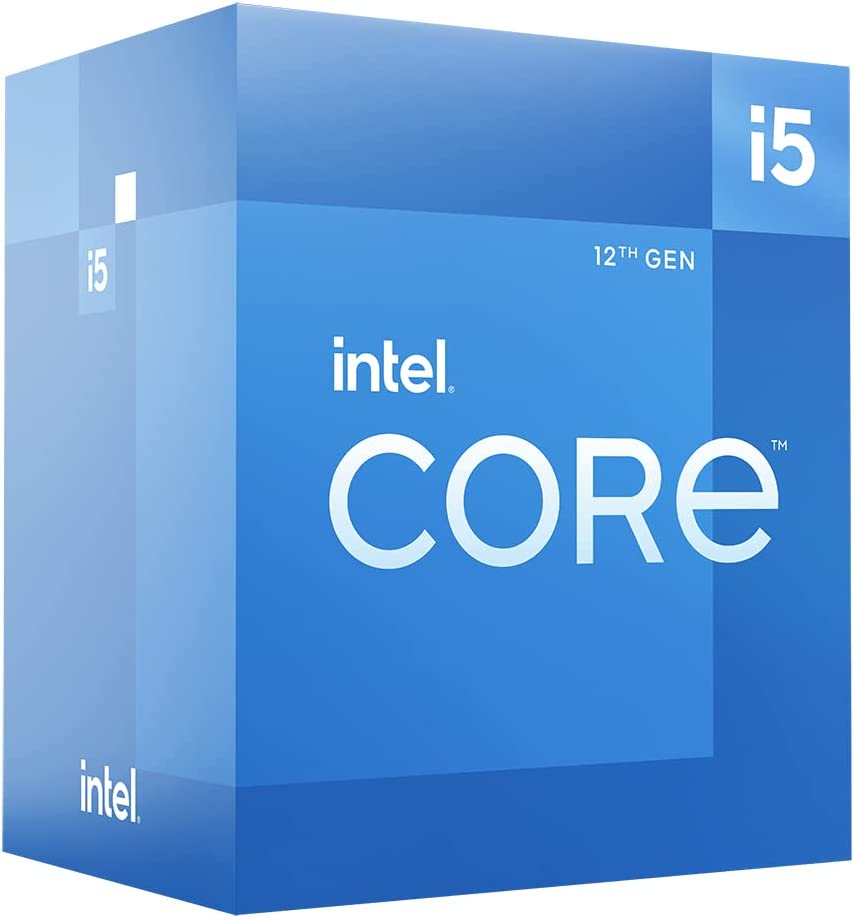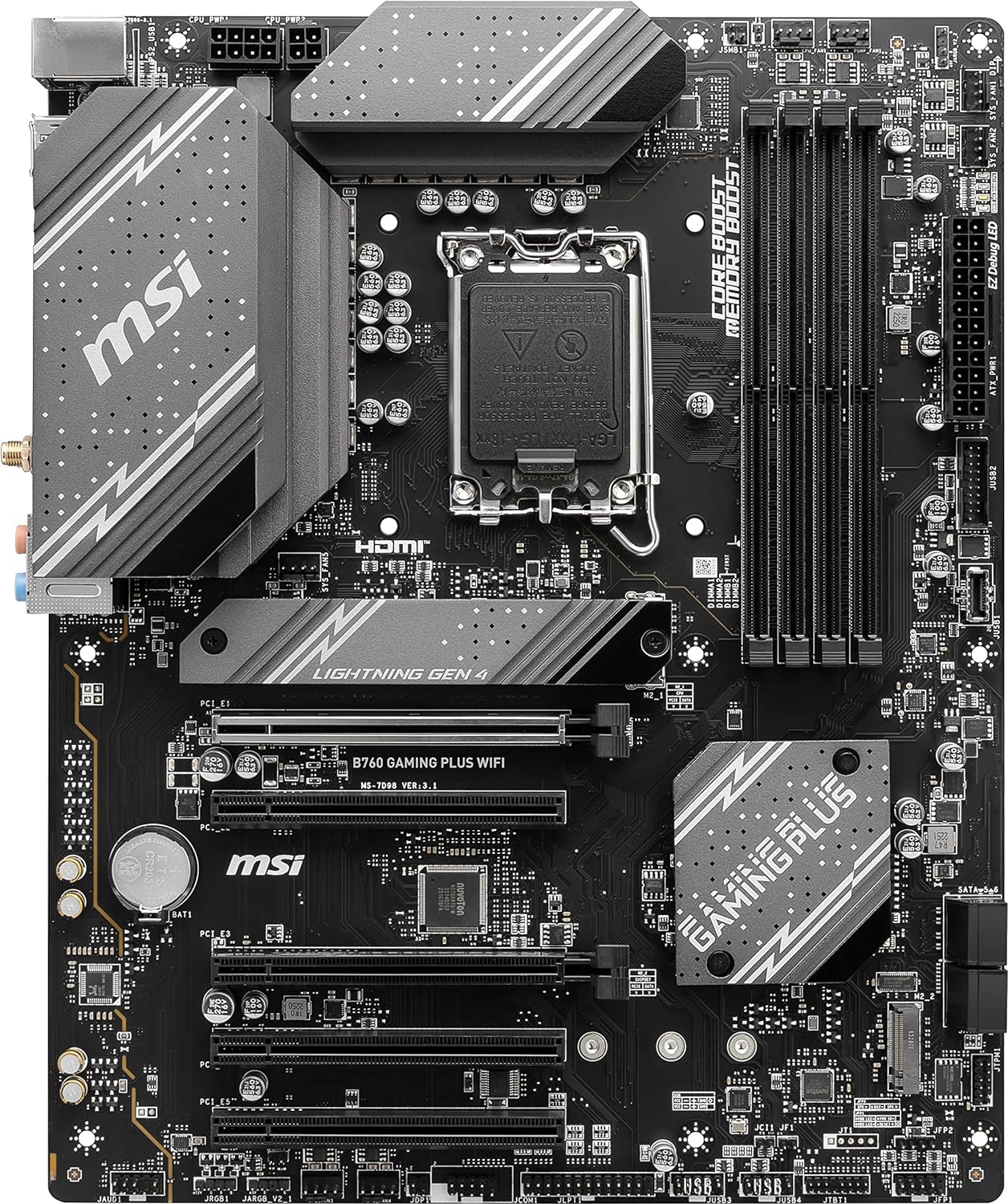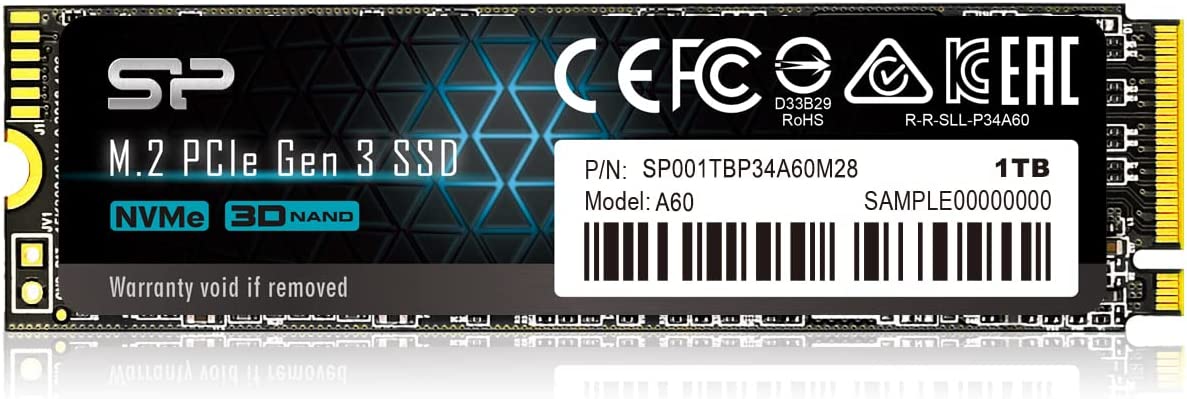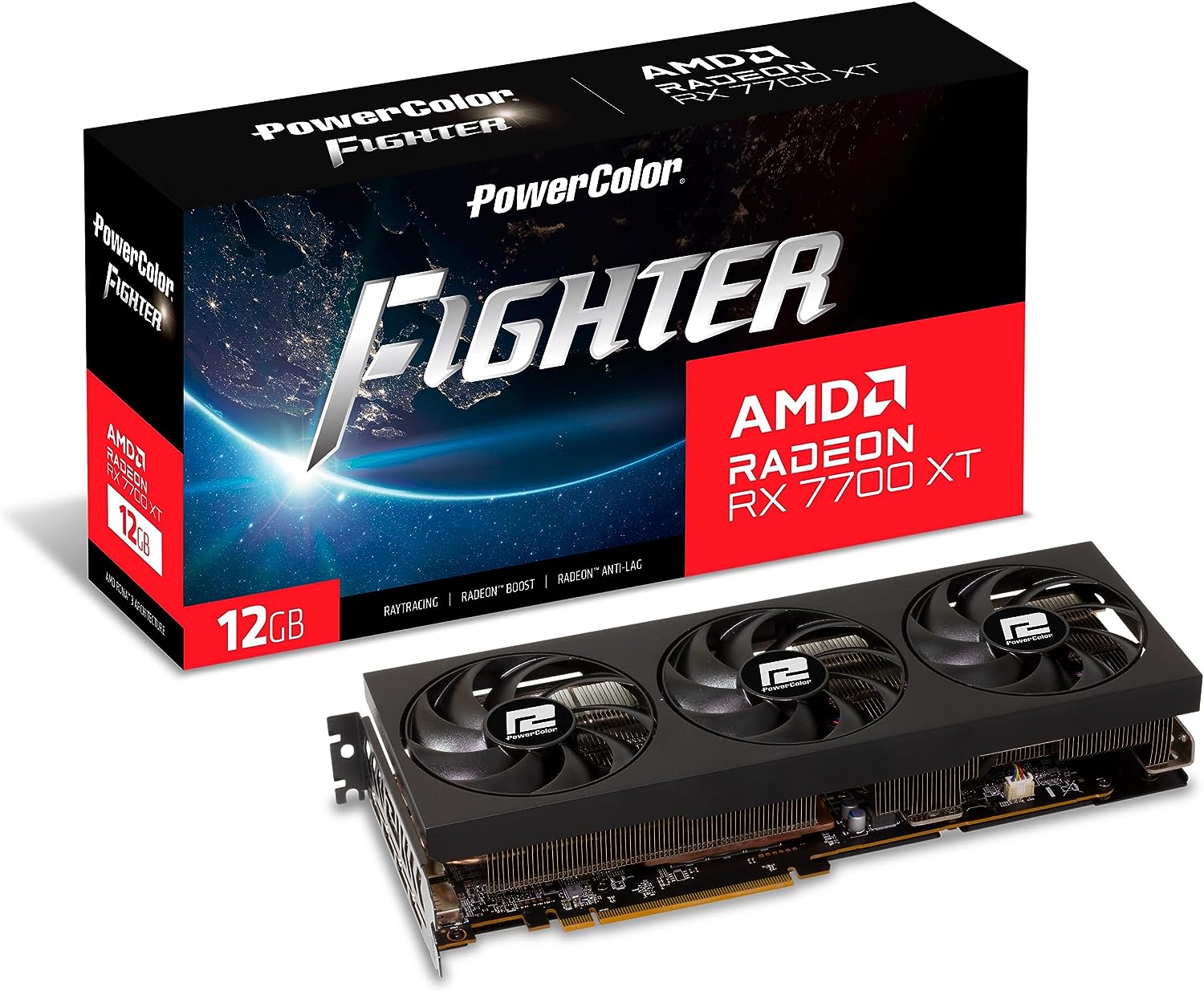Building a $1000 gaming PC is ideal when you want premium performance and a foundation for the future of PC gaming. At this budget range, you can opt for a higher-end motherboard to increase the build’s “quality of life” as you continue to use it for years to come.
If you want to know how to build a gaming pc for around the $1000 price point then you should follow the part list below. This guide will show you how to go about building it as well as share what you can expect out of a build like this.
$1000 PC Build Part List:
Last Updated: January 21st, 2024
Case – Thermaltake V250 Mid-Tower Case
You can use Other Mid-Tower Cases as well.
Feel free to reach out in the comments below for help with other case choices and compatibility. 👍
CPU – Intel Core i5-12400F 4.4 GHz Processor
Motherboard – MSI B760 Gaming Plus WiFi LGA 1700 Motherboard
RAM – Kingston FURY Beast 16 GB (2 x 8 GB) DDR5-6000
Storage – Silicon Power 1TB NVMe M.2 SSD
GPU – PowerColor Fighter RX 7700 XT 12GB
PSU – EVGA SuperNOVA 80+ Gold 750W
Estimated Final Price: $990-$1100
Gaming Performance
A gaming rig that’ll run you around $1000 ensures that you have some of the best gaming performance available for the lowest price possible. It’s easily one of the best builds when it comes to power per dollar spent.
Although you could save more money by opting for a DDR4 board and RAM, I wouldn’t suggest it. The cost is just a bit higher for the newest RAM available for a build like this.
You’ll have a good foundation for upgrading this way!
The RX 7700 XT card combined with an Intel Core i5-12400F gives you enough performance power to match up with a 144hz 1080p monitor as well as having potential for high-quality VR gaming and some awesome 1440p performance.
At the highest graphics settings possible at 1440p: You can expect this rig to run games such as God of War at 85 FPS average, Red Dead Redemption 2 at 95 FPS average, Fortnite at 250+ FPS average, Elden Ring at 80 FPS average, and Apex Legends at 300 FPS average.
This build is configured to set you up for the far future upgrades within the Intel platform. You also get a newer motherboard, a future-proof power supply, and amazing performance across the board.
When it comes to having a PC build that can handle 100+ FPS on the highest settings right away, this is the build to go for. This is for those of you that want to start out on the highest quality that’s available without going much over the $1000 mark.
How To Build This $1000 Gaming PC
I’d highly recommend following something like the video guide below when it comes to putting this PC together. It’s a great guide and it is easy to follow!
There may be some parts that are different from this build in the video embedded below and that’s okay! If there is another part that you don’t understand then you should look through the manual of that part and/or look up other video tutorials as well.
If you find yourself having trouble understanding a certain part then you should always search for the specific part and how to install it on YouTube, there are plenty of videos out there showcasing how each part can be installed.
For example, if you aren’t sure how to install your solid state drive then simply search “How to install a solid state drive into PC” on YouTube and you’ll find plenty of material to follow.
Also, you don’t have to use the above case for your build!
You can use almost any other mid-tower case if the above case isn’t your style. Feel free to browse the mid-tower cases on Amazon and if you find one that you think you’d like to use, link it to me in the comments below and I’ll be able to let you know if it’d work or not.
After putting your rig together, you’ll need to install your operating system, drivers and other software. You’ll also need to get connected online.
There are a couple of posts here on the site that you should read up on if you need to know how to install your operating system as well as getting connected online.
Click the buttons below to learn how to install Windows 11 and get an internet connection with your build!
Have Any Questions?
Feel free to reach out to me in the comments area below if you have any questions about the build, I’m all ears!
From average FPS rates for specific games, hardware compatibility, or whether or not a different case would work with this build… I’m here to help! 🙂








I followed all instructions but the video that is linked above is from 2020 wasn’t the same build as you have above for July 2023 that I purchased all via Amazon…
CPU – Intel Core i5-12400F 4.4 GHz Processor
Motherboard – MSI PRO Z690-A LGA 1700 Motherboard
RAM – G.Skill RipJaws V Series 16GB (2 x 8GB) DDR4 3600MHz
Storage – Silicon Power 1TB NVMe M.2 SSD
GPU – XFX Speedster RX 6700 XT CORE 12GB
PSU – EVGA SuperNOVA 80 Plus Gold 750W
Case – Somwhow I bought the similar though not colorfully lit
Corsair 4000D Airflow Tempered Glass Mid-Tower ATX PC Case
Anyhow a bit confused at the moment
I finished my build…using the instructions manuals online or included in each part box…
Then I plugged in the monitor -I bought a KOORUI 27 Inch QHD Gaming Monitor 144 Hz, VA, 1ms, DCI-P3 90% Color Gamut, FreeSync G-Sync Compatible, (2560×1440, HDMI, DisplayPort)…
I original used the VGA cables then switched to HDMI and its turning on
but the monitor states its finding no signal after like 10-12 second…when I power on…
All 3 fans are working although I cant tell if graphics fans are spinning…
My ethernet is plugged in and lights showing by ethernet plug yellow and green light are on…by io plate
USB for wireless keyboard and mouse…are plugged in
I had a green led light on motherboard one of the “EZ debug LED” lights …”boot” that I fixed by reinserting the two DDRAM back into their slots with better form…having them click in properly…
But now when I power on even though no lights are one or lingering on the “EZ debug LED” when I boot up they each come on for like a fraction of a sec then only the white led “VGA” hangs on for like max 2 seconds then goes out…
…but no “post” sound, no sound at all… have I ever heard upon powering on …so something isn’t booting up properly but I dont know what…
Ive check every cable… now what?
Steve
Hey Steve,
Yes, the process of putting a PC together has essentially been the same for many years now, hence why I’ve got the video on the page for any of the builds shared here – it’s a great video showing the basics of everything. And also mentioned in that section that if you want to see how a specific part is installed, then there are plenty of videos for showing the installation process for any other specific part that you would be using with your build, or like you mentioned following along with different part manuals.
And you are using the HDMI port going straight to your video card HDMI port and not the HDMI port for your motherboard, right? You aren’t able to use any of the motherboard’s video ports, you need to use the video ports available on your graphics card to your monitor.
After you reinserted the RAM sticks, did you ensure that they’re in the correct slots? Different motherboards sometimes have different specific slots for a single stick, two sticks, etc, and you’ll likely run into issues if you aren’t having the RAM inserted into the correct slots for any specific board. You should also try to boot up with using a single RAM stick, in the correct slot – you’ll be able to see the correct slots within the motherboard’s manual.
On the first boot up when you mentioned that all of your fans were working, spinning, you mentioned you couldn’t tell if the graphics card’s fans were spinning. As you’re troubleshooting and getting to booting up, keep in mind that most GPUs aren’t going to have the fans spinning unless under a heavier work load so the fans won’t be continuously spinning while you’re booting up.
It sounds like either the RAM not being seated in the correct slots or you were using a motherboard’s video port instead of the GPU’s ports on the initial boot up.
Let me know if/when you’ve tried those steps or if you need more help as you’re getting it going! 👍
Can this PC build handle Windows 11 or Windows 11 pro because I can’t find a Windows 10 disc
Randal,
Within the section I wrote about building this PC I share how to get Windows installed and getting connected to the internet as well. Here is a link to the article if you missed it, you can also start with an install of Windows 11 as well using Microsoft’s official installation assistant.